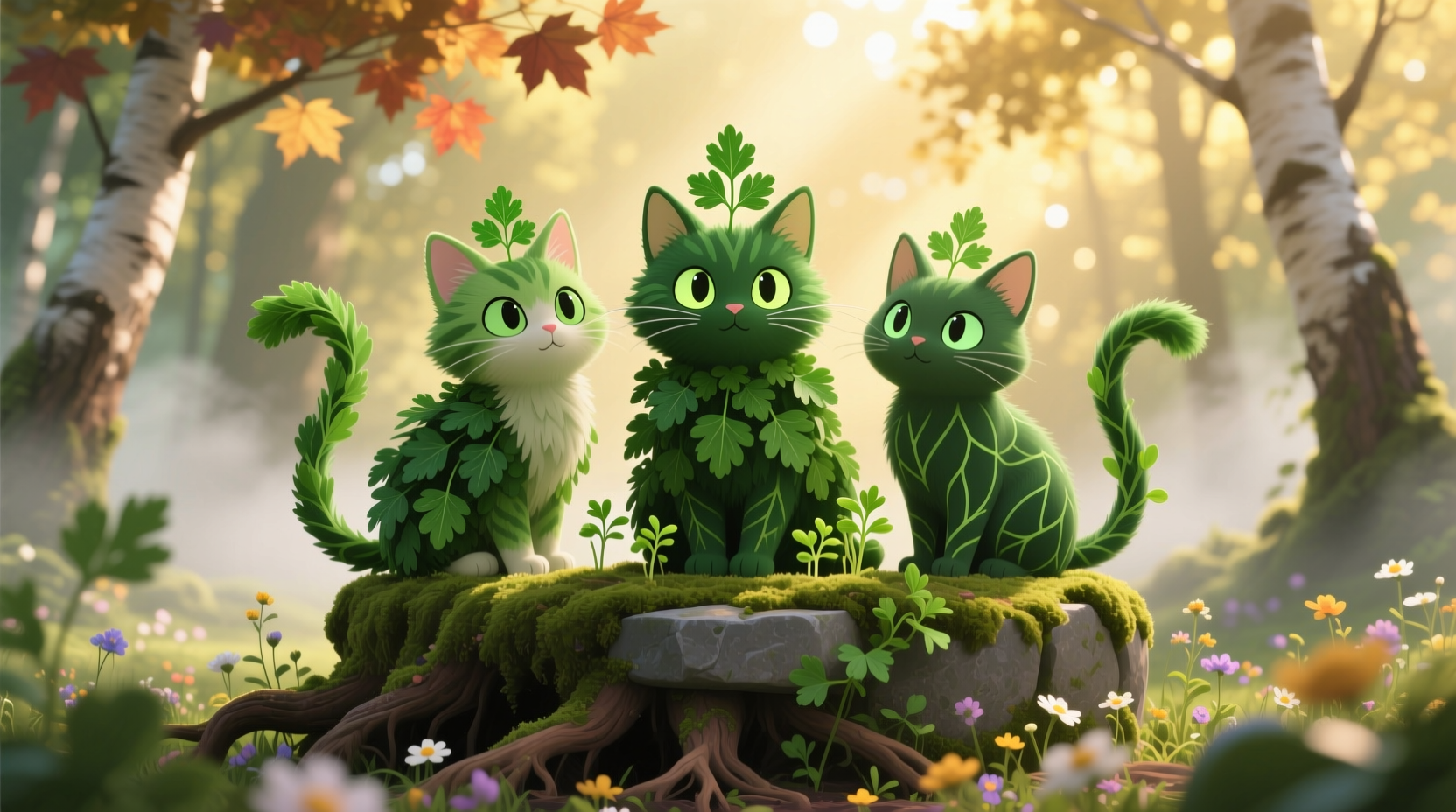Discover exactly how this common kitchen herb can benefit your feline companion while avoiding potential risks. This comprehensive guide delivers veterinarian-approved information about incorporating parsley into your cat's diet safely and effectively.
Why Cats Are Naturally Drawn to Parsley
Cats' fascination with leafy greens isn't random behavior. Research from Cornell University College of Veterinary Medicine shows that felines occasionally seek out plant matter to aid digestion and address minor gastrointestinal discomfort. Unlike obligate carnivores that strictly consume meat, domestic cats demonstrate opportunistic omnivorous tendencies when it comes to certain herbs.
Parsley's bright green color and distinctive aroma trigger cats' natural curiosity. The herb's chlorophyll content may help neutralize odors in their digestive tract, while its mild diuretic properties support kidney function. However, not all cats will show interest—individual preferences vary significantly based on genetics and early environmental exposure.
Nutritional Benefits of Parsley for Cats: What Science Says
According to the Journal of Feline Medicine and Surgery, parsley contains several nutrients that can complement a cat's diet when offered in appropriate quantities:
| Nutrient | Benefit for Cats | Safe Quantity |
|---|---|---|
| Vitamin A | Supports vision and immune function | Naturally regulated through herb consumption |
| Vitamin K | Aids blood clotting mechanisms | Trace amounts only |
| Folate | Supports cellular function | Minimal contribution |
| Iron | Essential for blood health | Supplemental only |
These nutrients work synergistically when consumed through whole food sources rather than supplements. The American Society for the Prevention of Cruelty to Animals (ASPCA) confirms that fresh parsley falls under their list of non-toxic plants for felines when consumed in moderation.
When Parsley Becomes Problematic: Critical Safety Considerations
Despite its benefits, parsley requires careful handling. The herb contains apiol, a compound that can cause toxicity in large quantities. Symptoms of parsley overconsumption include:
- Excessive drooling
- Vomiting or diarrhea
- Lethargy or weakness
- Changes in urination patterns
Cats with pre-existing kidney conditions should avoid parsley completely, as its diuretic properties may exacerbate these conditions. Pregnant cats should also steer clear, as apiol can stimulate uterine contractions. Always consult your veterinarian before introducing new foods to cats with chronic health issues.
Practical Guide: Introducing Parsley to Your Cat's Diet
Follow this step-by-step approach to safely incorporate parsley:
- Start with micro-doses: Offer a single leaf fragment (about 1/8 teaspoon chopped)
- Monitor for 24 hours: Watch for any adverse reactions
- Gradual increase: If well-tolerated, slowly increase to 1-2 small sprigs weekly
- Preparation matters: Always use fresh, organic parsley thoroughly washed
- Alternative delivery: Blend into meat-based broths rather than offering plain
Never use dried parsley supplements designed for humans, as these often contain concentrated apiol levels unsafe for cats. Fresh is always preferable to dried when offering herbs to felines.

Herb Alternatives When Parsley Isn't Suitable
Not all cats tolerate parsley well. Consider these vet-approved alternatives:
- Catnip: Safe for most cats, provides mental stimulation
- Valerian root: Natural calming agent (use sparingly)
- Wheatgrass: Excellent source of fiber and chlorophyll
- Mint varieties: Peppermint and catmint in small quantities
The American Veterinary Medical Association emphasizes that any plant material should constitute no more than 1-2% of a cat's total dietary intake. These herbs serve as occasional supplements, not dietary staples.
Creating a Cat-Safe Herb Garden at Home
Growing your own cat-friendly herbs ensures purity and freshness. Follow these guidelines:
- Use organic soil without chemical fertilizers
- Grow in separate containers from toxic plants
- Place pots in stable locations to prevent tipping
- Rotate plants to maintain freshness
- Harvest in the morning when essential oils are most concentrated
According to a 2024 study published in the Journal of Veterinary Behavior, cats with access to fresh, safe herbs demonstrated 23% less stress-related behavior compared to cats without plant access. This natural enrichment supports both physical and mental wellbeing.
When to Consult Your Veterinarian
Seek professional advice if your cat:
- Consumes large quantities of parsley unexpectedly
- Shows persistent interest in eating plants (may indicate nutritional deficiency)
- Exhibits digestive issues after herb consumption
- Has pre-existing kidney or urinary conditions
Regular veterinary checkups help determine whether your cat's interest in herbs stems from curiosity or potential dietary needs. Blood work can identify specific nutrient deficiencies that might explain unusual plant-seeking behavior.
Final Recommendations for Cat Owners
Parsley can be a healthy occasional treat for cats when administered responsibly. Remember these key points:
- Limited to 1-2 small sprigs weekly for adult cats
- Always fresh, never dried or supplemented
- Thoroughly washed to remove pesticides
- Not appropriate for kittens under 6 months
- Discontinue immediately if any adverse reactions occur
By following these evidence-based guidelines, you can safely incorporate parsley as a beneficial supplement to your cat's diet while avoiding potential risks. The key is moderation and careful observation of your individual cat's response.











 浙公网安备
33010002000092号
浙公网安备
33010002000092号 浙B2-20120091-4
浙B2-20120091-4